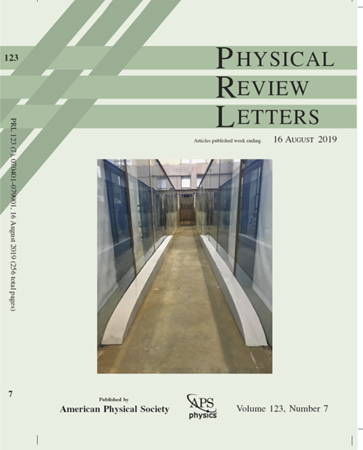Strong Enhancement of Magnetic Coercivity Induced by Uniaxial Stress
IF 8.1
1区 物理与天体物理
Q1 PHYSICS, MULTIDISCIPLINARY
引用次数: 0
Abstract
The performance of permanent magnets is intricately tied to their magnetic hysteresis loop. In this study, we investigate the heavy-fermion ferromagnet单轴应力诱导磁矫顽力的强力增强
永磁体的性能与其磁滞回线密切相关。在本研究中,我们通过单轴应力下的磁化测量研究了重铁素体铁磁体 CeAgSb2。我们观察到,仅在大约 1 千巴的适度应力下,磁矫顽力就增加了 2400%。这种效应甚至在压力释放后仍然存在,这归因于应力诱发的缺陷,它能有效地钉住畴壁。有序温度和饱和矩等其他磁性能仅表现出微弱的压力依赖性,并显示出完全的可逆性。我们的发现为增加矫顽力场强度和提高铁磁材料的能量积提供了一条很有前景的途径,并有可能适用于广泛的商业或新兴磁性应用。
本文章由计算机程序翻译,如有差异,请以英文原文为准。
求助全文
约1分钟内获得全文
求助全文
来源期刊

Physical review letters
物理-物理:综合
CiteScore
16.50
自引率
7.00%
发文量
2673
审稿时长
2.2 months
期刊介绍:
Physical review letters(PRL)covers the full range of applied, fundamental, and interdisciplinary physics research topics:
General physics, including statistical and quantum mechanics and quantum information
Gravitation, astrophysics, and cosmology
Elementary particles and fields
Nuclear physics
Atomic, molecular, and optical physics
Nonlinear dynamics, fluid dynamics, and classical optics
Plasma and beam physics
Condensed matter and materials physics
Polymers, soft matter, biological, climate and interdisciplinary physics, including networks
 求助内容:
求助内容: 应助结果提醒方式:
应助结果提醒方式:


